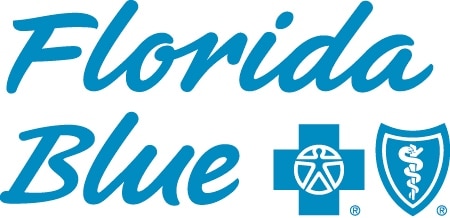Most of us are familiar with the medication group benzodiazepines. This class of medication is commonly utilized in psychiatry and neurology; however, it does appear in other medical specialties at times. It’s estimated that about 5% of American adults are actively prescribed a benzodiazepine, with the usage increasing a bit with age. Typically, the average is 7.5 to 9% for individuals 51 years and older. You will likely find that the professional opinion on these medications varies greatly—with some providers being very liberal in their benzodiazepine prescribing and others that simply do not use these medications in their clinical practice.
“Benzodiazepines are useful drugs when they are used appropriately, when used inappropriately, they have shown a significant potential for dependence, and this is a significant problem; this problem affects not only its reputation in the medical community but also its reputation in the public.” -Dr. Malcom Lader (2011) (Psychiatrist & Clinical Pharmacologist, leading benzodiazepine researcher).
Brief History of Discovery
The story of benzodiazepines begins in the 1950s with the discovery of chlordiazepoxide (Librium) by chemist Leo Sternbach. This discovery was accidental, but he found the compound had potent sedative and muscle-relaxing properties. Chlordiazepoxide was introduced to the market in 1960 and quickly became popular for its ability to treat anxiety without the severe side effects associated with barbiturates. The barbiturates were the previous standard of care and came with significantly increased risks/complications. Benzodiazepines were viewed as a safer alternative at the time. Following chlordiazepoxide, we discovered diazepam (Valium) in 1963, and this became one of the most prescribed medications of all time in the United States. Throughout the 1960s and 1970s, numerous other benzodiazepines were developed, each with their own nuanced difference.
Understanding Benzodiazepines
Benzodiazepines, also known as “benzos,” have been a major component in the treatment of certain psychiatric and neurologic disorders for several decades. In most clinical situations, these medications are highly effective, but their use remains controversial due to the risk of dependence, abuse, and other serious complications associated with abrupt discontinuation.
Benzodiazepines act on the central nervous system. These medications produce their therapeutic effect by up-regulating the neurotransmitter gamma-aminobutyric acid aka (GABA). GABA is a potent inhibitory neurotransmitter, inhibitory meaning it reduces or inhibits excessive electrical activity in the brain. By increasing GABA with a benzodiazepine this produces a calming effect on the brain which can alleviate or at least assist in the control of anxiety disorders, sleep disorders, muscle spasms, and to stop seizure activity. They have become one of the most widely prescribed psychotropic medications worldwide.

- Anxiety Disorders: Benzodiazepines are frequently prescribed for generalized anxiety disorder (GAD), social anxiety disorder, panic disorder, and other anxiety-related conditions. They help reduce the overwhelming feelings of fear, worry, and nervousness that characterize these disorders.
- Insomnia: Due to their sedative properties, benzodiazepines are also prescribed to help people who have difficulty falling or staying asleep. They can be particularly useful for short-term treatment of acute insomnia, especially when stress or anxiety is the root cause—with long-term use they will lose their sedative effects.
- Seizure Disorders: Benzodiazepines are used in the treatment of epilepsy and other seizure disorders because of their ability to stabilize electrical activity in the brain.
- Muscle Spasms: Conditions that cause muscle rigidity or spasms, such as multiple sclerosis or spinal cord injuries, can be managed with benzodiazepines due to their muscle-relaxing effects.
- Alcohol Withdrawal: Benzodiazepines are often used in the management of alcohol withdrawal syndrome to prevent seizures and other complications.
Commonly Used Benzodiazepines
- Alprazolam (Xanax)
- Diazepam (Valium)
- Clonazepam (Klonopin)
- Lorazepam (Ativan)
-Note the common ending “-lam or -pam” / These are just examples, there are several others.
The Benefits of Benzodiazepines:
Benzodiazepines are unique in their ability to provide rapid relief of anxiety and insomnia symptoms; this can be especially helpful for patients who have severe and debilitating symptoms that impact their quality of life on a regular basis. This contrasts with many of our other anxiolytic agents, such as antidepressants, which can take weeks before clinical benefit is noticed. Most of these benzodiazepines work within a few minutes, making them one of the most effective agents for acute and severe anxiety /panic attacks. In an emergency setting, benzodiazepines are an invaluable resource to quickly stop seizure activity and to avoid life-threatening complications associated with alcohol withdrawal/detoxification.

The Risks and Complications
It’s important to understand that just because a medication is effective does not mean it is without significant risk. There are six key takeaways when evaluating the risks and benefits of benzodiazepine therapy.
- Physical And Psychological Dependence; this is one of the most concerning risks associated with benzodiazepines. Physical dependence occurs when the body adapts to the presence of the medication and ultimately results in higher dosing needs for the same effect. You may hear this referred to as tolerance. Patients can not only be physically dependent on benzodiazepines, but they can also experience emotional and mental dependence, especially when this might be the first medication that has been helpful for their anxiety.
- Withdrawal Symptoms: Benzodiazepine withdrawal can be severe and life-threatening. It’s important to understand that benzodiazepine withdrawal is drastically similar to alcohol withdrawal, meaning benzo withdrawal can result in irritability, rebound anxiety, seizures, and even death.
- Cognitive Impairment: Long-term utilization of benzodiazepines has been associated with cognitive decline, especially in older adults. It’s important to understand that elderly individuals on benzodiazepines are at a significantly increased risk of falls as well.
- Overdose Risk; Benzodiazepines, contrary to popular belief, are relatively safe when taken alone and at the appropriately prescribed dose. Benzodiazepines, however, can be extremely dangerous when combined with other CNS depressants such as alcohol, opioids, and even certain antidepressants. Special consideration is given to the combination of benzodiazepines and opioids as this can be a very slippery slope for some patients, and they should be given as needed Narcan in the event of an accidental overdose.
- Long-Term Impact On Mental Health; recent data shows us that prolonged utilization of benzodiazepines has been linked to worsened mental health outcomes. Some studies indicate that utilizing a benzodiazepine for more than five to 10 years can increase the risk of overall depression and suicidal ideation. Essentially most data shows us that in the short term, benzodiazepines are very helpful, but with long-term use, the risk may not outweigh the benefit.
- Counterproductive Combinations: As previously discussed, benzodiazepines are a CNS depressant meaning they reduce central nervous system electrical activity to produce their effect. Unfortunately, it is not uncommon to see patients taking a combination of benzodiazepines and stimulant medications (e.g., Adderall, methylphenidate, Vyvanse) for diagnoses like ADHD. These medications receive the title stimulants as they indeed increase central nervous system activity, this would be quite literally considered an opposing effect. Combining these two classes of medications can lead to unpredictable impacts on the brain and the body and often result in worsening anxiety and erratic mood changes. It’s important to understand that both benzodiazepines and stimulants have the potential for abuse and tolerance, often patients who are on this type of combination find themself taking the stimulant to “get moving” in the morning and the benzodiazepine to “wind down” in the evenings—this is not ideal. It’s also important to note that using these medications together can mask the effect of each other, leading to a higher risk of overdose. Essentially a patient should not be prescribed both a benzodiazepine and stimulant simultaneously as this leads to poorer long-term outcomes for both ADHD and anxiety and puts the patient at risk for unpredictable mood/affective/cognitive changes, which can complicate the clinical picture significantly.
Conclusion
Benzodiazepines play a crucial role in psychiatry and neurology, as well as appearing in several other medical specialties from time to time. They offer rapid relief of distressing symptoms, making them an invaluable clinical tool in the treatment of severe and/or persistent anxiety, insomnia, and a select few other clinical diagnoses. As with any medication, they come with significant risks as well as significant benefits. As a recap, the most significant risk is dependence on cognitive impairment and the dangers of abrupt discontinuation leading to withdrawal (e.g., death). It is vital that patients have a general understanding of benzodiazepines if they are currently prescribed or if they may receive this type of medication in the future. Benzodiazepines are a powerful tool but not without specific pitfalls. Careful consideration, medical supervision, and ongoing evaluation of the necessity of treatment are vital to the safe utilization of benzodiazepines.

References
Harvard Health Publishing. (2020). Benzodiazepines (and the alternatives). Harvard Medical School. Retrieved from https://www.health.harvard.edu
University of Rochester Medical Center. (n.d.). Benzodiazepines – Health Encyclopedia. Retrieved from https://www.urmc.rochester.edu
Texas A&M Today. (2019). Which anti-anxiety medication is right for me? Retrieved from https://today.tamu.edu
South Carolina HealthViz. (2018). Benzodiazepine equivalency table. Retrieved from https://www.schealthviz.sc.edu
















